Hiking in CO
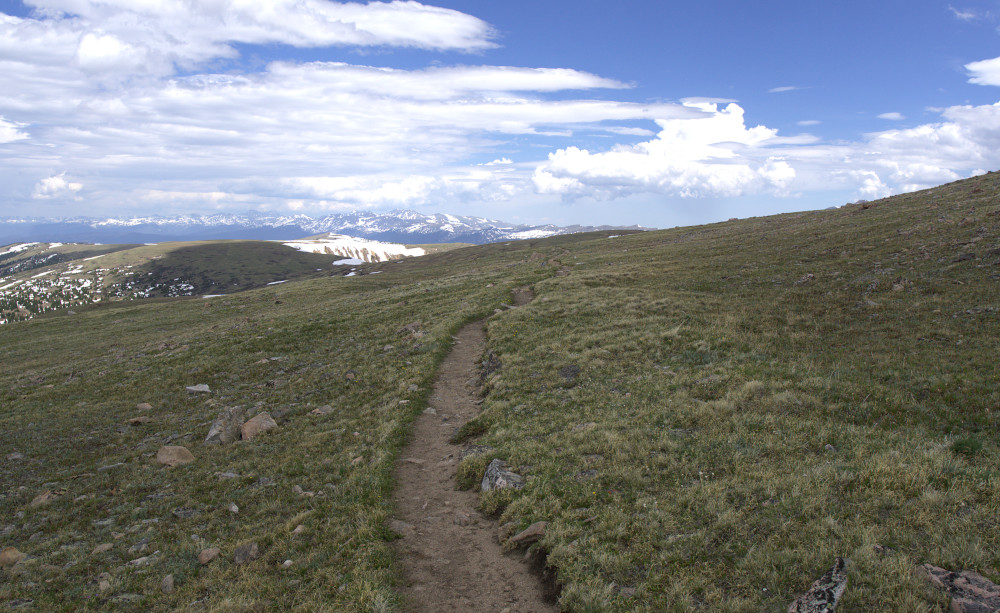
I can’t think of anything to write about, so here’s a post about a hiking trip I went on a couple of months ago. Things didn’t go perfectly, but it was still fun!
1. DO plan ahead
About a month before the the trip, I decided that I’d put my credit card’s points to use by flying out on a weekend trip to somewhere. I like taking photos, I like nature, and Colorado was (relatively) close, so I asked a buddy if he wanted to tag along, and bought a ticket to Denver. I then forgot about this trip for a few weeks. A couple of days before the flight we realized we needed to actually do something this weekend, so we sat down and skimmed through trail sites, state park maps, and travel guides.
I originally wanted to do a 14er, but it turned out that most 14er peaks around this time of year are either completely frozen or too far away from roads for us. We tried looking for easy 13ers. As it turns out, the sort of people who spend their free time climbing up really high mountains tend to use the word easy in a very unique way. For example (not a literal quote but it might as well be):
Hike starts out with an easy 10 mile hike at 5-10% grade, before steepening to a moderately difficult 20 mile 45% ascent. You may need crampons and ice picks to make it to the summit, but the climb should only be a few hours long. 5⁄5, highly recommended for any novice!
Or:
The climb to the summit ends with a very easy section of climbing ice underhangs, where it is very easy for you to fall and break all the important bones in your body.
Eventually, we settled on a trail labelled CDT - Berthoud Pass to Stanley Mountain, which rises 1000 feet from ~11,500 up to 12,500 feet (part of the Continential Divide Trail, a 3,000 mile trail starting in New Mexico and ending in Montana). The ascent didn’t seem that bad, and it was only a 8 mile out-and-back hike! Plus it was close to the road, with direct access from a parking lot. Trail reports were mixed, with some people reporting snow, but the reports weren’t very descriptive, and seeing how we were Canadians, a little snow wouldn’t hurt us.
This was mistake #1. If we had more time, we could’ve spent a little more time looking into weather around the area, and we probably would’ve found a nicer trail. That guy who posted a trail report saying that there was ‘alot of snow’ was right. We ran into 3 foot high packing snow drifts less than a mile out.
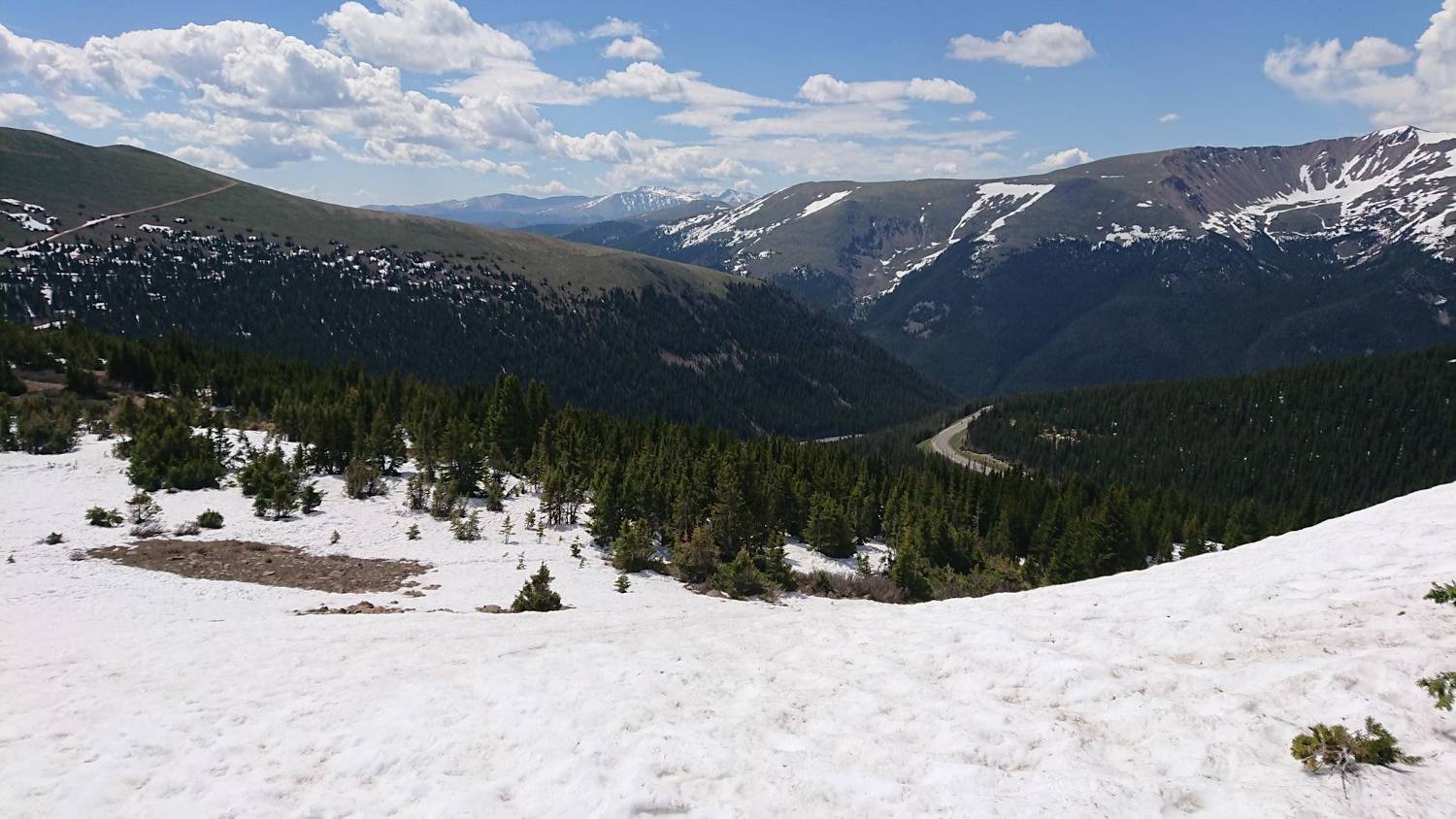
Yup, looks like snow
Hiking up these was not fun, since we were wearing regular hiking boots. Hiking down was much worse, for reasons I’ll cover later on. Know the weather in the area for the time of year, and rely on trail reports if you can.
2. DO respect altitude
To help acclimate to the altitude, we spent our first day in downtown Denver and the general Denver/Boulder area. Denver seems like a chill place. Check out the MoMA there.
The next day, we drove to Stanley Mountain, put on our hiking gear, walked up a slight incline, and gasped for air.
Mistake #2. The effects of altitude are real. As someone who’s biked multiple 100km rides, and spends about 5 hours on the saddle every week, I’d like to believe that I’m OK in terms of cardiac output. But even for me, every little motion saps away strength, and even something as basic as reaching down to tie your shoes can bring on dizziness and tunnel vision. Steep sections are done one step at a time. Turns out that 24 hours isn’t enough to adjust to physical activity at 11,000 feet. We had to move incredibly slowly during the ascent, and I was exhausted by the time we got to the top. By the time we were at the hotel, I had developed altitude sickness, which feels like the worst fever ever combined with the worst cold ever. Don’t get altitude sickness.
3. DO respect the weather
The night before our hike, weather forecasts for the trail area called for clear skies. The morning of the hike, I didn’t bother checking the weather forecast. Whoops. Mistake #3. The bulk of the ascent was uneventful, but after a few miles we started seeing clouds rolling in in the distance. It was hard for me to tell if they were moving towards us or away from us, but whatever, clouds won’t do anything. We slowly made our way to the summit, and took a short break. I somehow still had 4G service at the top. Shitposting at 12,000 feet: S tier.
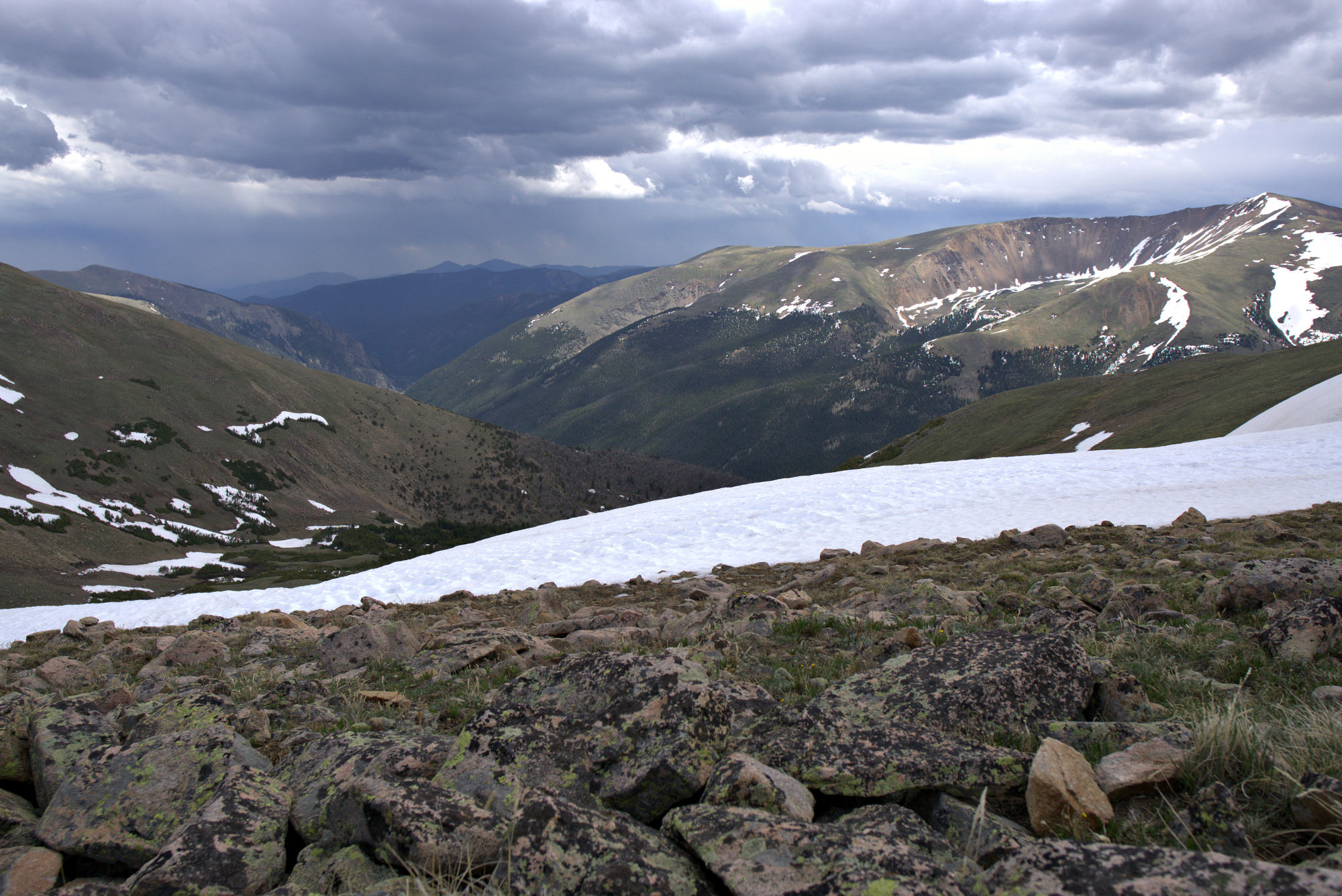
A view from the summit. Those clouds in the distance don’t look too friendly.
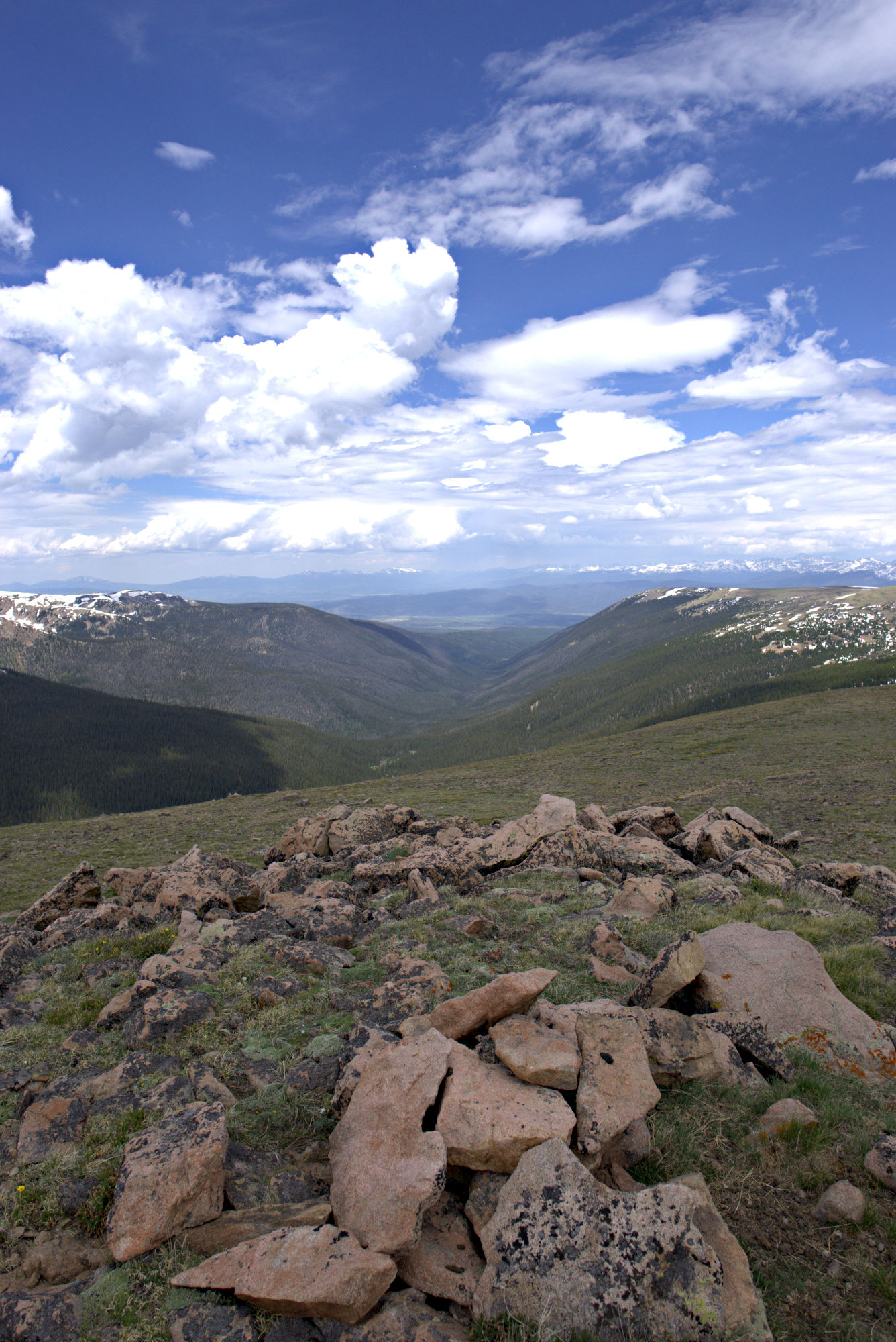
Turning around 180 degrees, the view is a lot greener and a lot less stormy.
The clouds are starting to roll in and we hear thunder in the distance. This is actually very bad news.
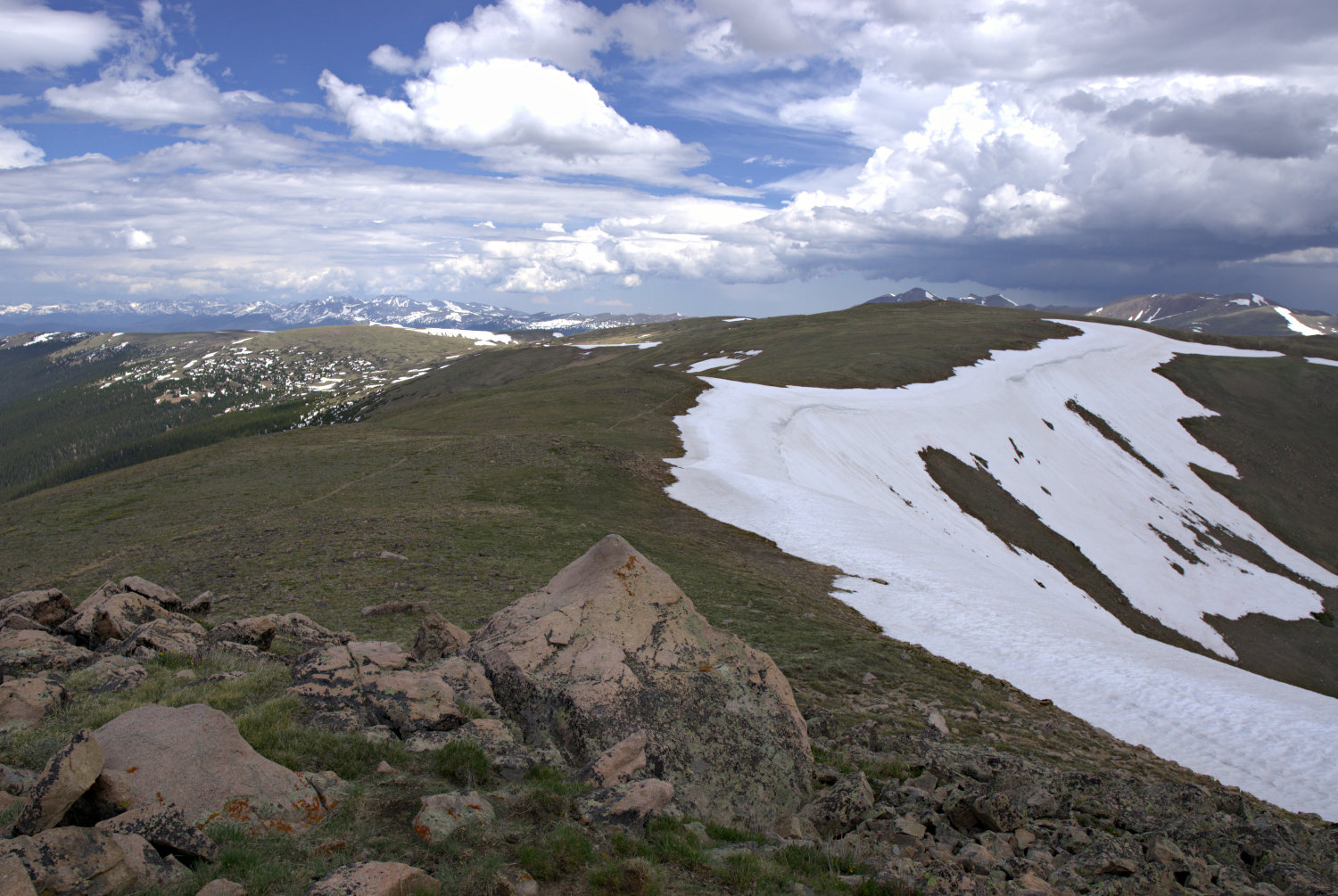
Unfortunately, this is where we came from. The path back down leads to that scary looking dark cloudy section.
We start high-tailing it back down. The slight downwards gradient gives us a little boost, but it’s not enough to outrun the storm. The wind picks up and we’re suddenly in the middle of a flash hailstorm. The hail stings, but we quickly forget about it as we see lightning hit the ground multiple times within a mile of us. We decide to no longer be the tallest objects in our immediate surroundings, and haul ass back to the bottom of the mountain.
Those snow drifts are now starting to melt and obscure the trail, and navigating them is a lot trickier now. Since they’re partially packed snow, it’s hard to tell if the snow is going to cave in when you step on it, which makes sprained ankles a real risk.
We slide down some snow drifts and make it back to the parking lot, completely soaked. On the drive back, I enjoy my altitude-induce migraine.
4. DO don’t be dumb and have fun
I know I’m making this sound like a terrible experience, but it was fun! I enjoyed the challenge, and the views were amazing. Colorado’s mountains are a great place to hike. Just don’t be dumb, and stay safe. If you’re going to hike in a tough environment for the first time, don’t yolo it, and do it with someone else. 12,000 feet up, on a mountain peak, completely alone, is not where you want to be when you discover that the stable rock you’re standing on isn’t so stable, or that you’ve developed a rare life-threatening form of altitude sickness.